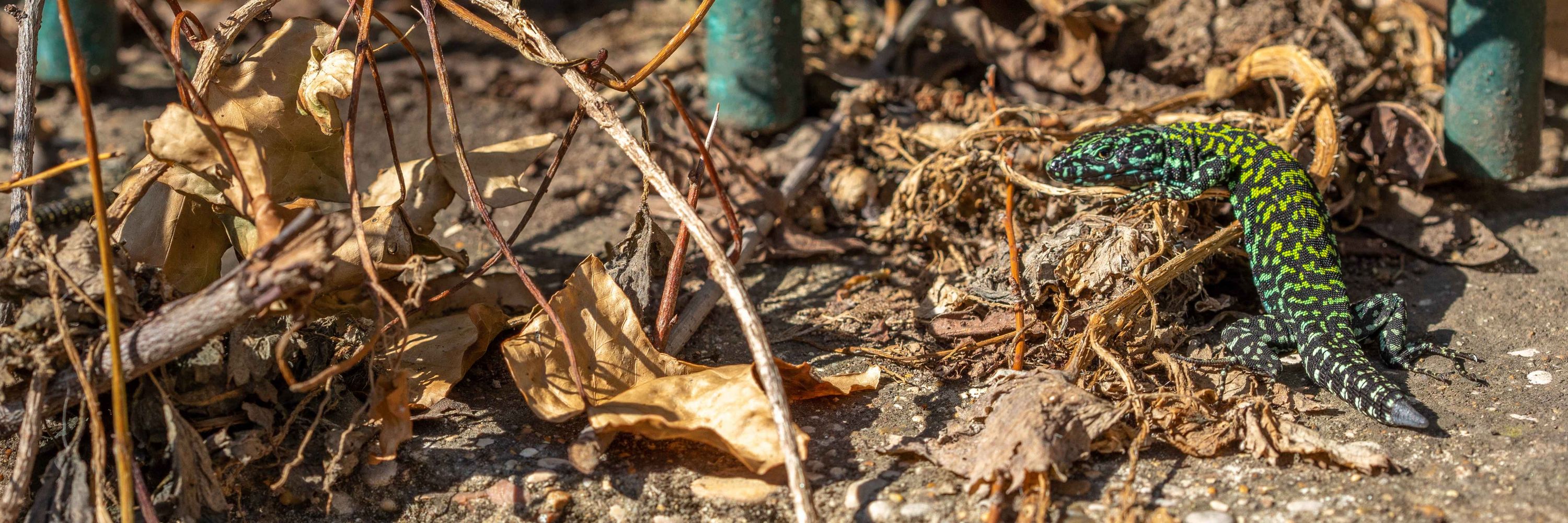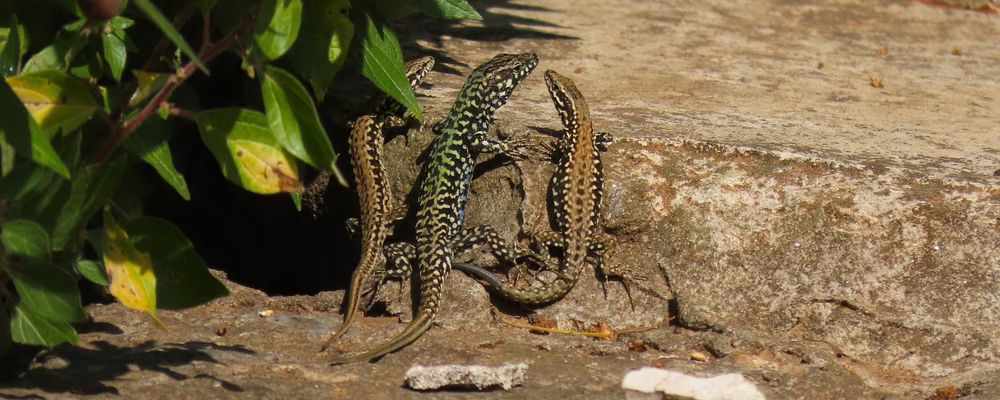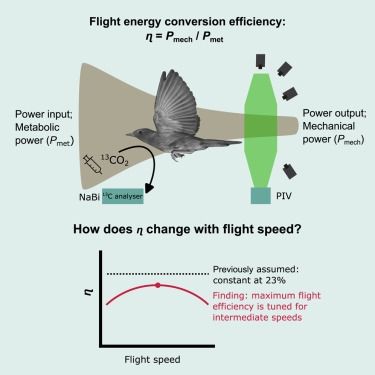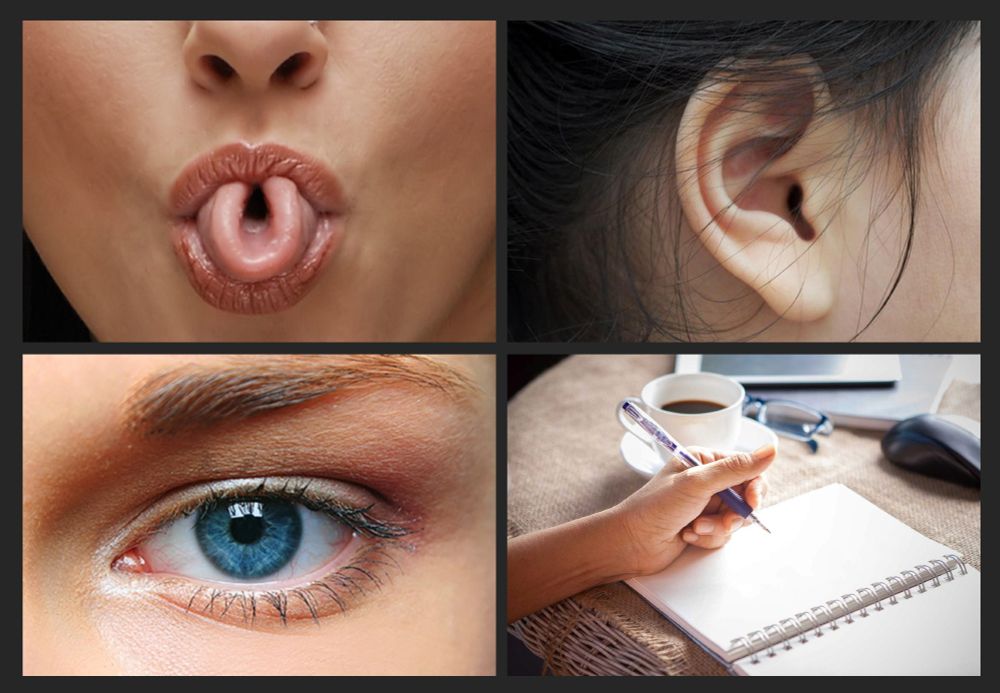

theconversation.com/reptiles-los...

theconversation.com/reptiles-los...
• Enticin 🌶️
• Attractin 👁️🫦👁️
• Temptin 🌺
• Seductin 🔥
And I find that wonderful. Please vote for your favorite. Credits to Trystam Wyatt's book on Pheromones and Animal Behavior.
#ethology

• Enticin 🌶️
• Attractin 👁️🫦👁️
• Temptin 🌺
• Seductin 🔥
And I find that wonderful. Please vote for your favorite. Credits to Trystam Wyatt's book on Pheromones and Animal Behavior.
#ethology
Let me tell you about the "three-legged pirate" lizards 🏴☠️
[Paper: www.journals.uchicago.edu/doi/10.1086/... ]
(1/n)

Let me tell you about the "three-legged pirate" lizards 🏴☠️
[Paper: www.journals.uchicago.edu/doi/10.1086/... ]
(1/n)
As forests are cut down, butterflies are losing their colours www.theguardian.com/environment/...

As forests are cut down, butterflies are losing their colours www.theguardian.com/environment/...




We ran a huge experiment to find out how ecological context favours camouflage and warning colouration as antipredator strategies. 1/6
www.science.org/doi/10.1126/...

We ran a huge experiment to find out how ecological context favours camouflage and warning colouration as antipredator strategies. 1/6
www.science.org/doi/10.1126/...
@uv.es @ucciuv.bsky.social
tinyurl.com/4rjfmde9
🧪🦎


@uv.es @ucciuv.bsky.social
tinyurl.com/4rjfmde9
🧪🦎
www.nationalgeographic.com/animals/arti...
#WalliesWorld

www.nationalgeographic.com/animals/arti...
#WalliesWorld


Euskadi suspende la campaña de la pesca de la angula ante la situación crítica de la especie
Un paso crucial para lo conservación de la anguila, tomada en el territorio donde su consumo tiene más arraigo
@miteco.gob.es y otras CCAA, os toca
www.europapress.es/euskadi/noti...

Euskadi suspende la campaña de la pesca de la angula ante la situación crítica de la especie
Un paso crucial para lo conservación de la anguila, tomada en el territorio donde su consumo tiene más arraigo
@miteco.gob.es y otras CCAA, os toca
www.europapress.es/euskadi/noti...
#divulgacion #lagartijas #color #desarrollo
www.uv.es/uvweb/univer...

#divulgacion #lagartijas #color #desarrollo
www.uv.es/uvweb/univer...
Roemer et al. propose a comprehensive evaluation of the limits and possibilities of passive acoustic monitoring of bats, identifying knowledge gaps and practice barriers, and highlighting novel ideas that may revolutionise practices🦇👇
buff.ly/l8DGN7X
🌍 🧪

Roemer et al. propose a comprehensive evaluation of the limits and possibilities of passive acoustic monitoring of bats, identifying knowledge gaps and practice barriers, and highlighting novel ideas that may revolutionise practices🦇👇
buff.ly/l8DGN7X
🌍 🧪
I'm very excited to share what will become the first chapter of my thesis.
Energy conversion efficiency peaks at intermediate flight speed in a migratory songbird www.cell.com/current-biol...

I'm very excited to share what will become the first chapter of my thesis.
Energy conversion efficiency peaks at intermediate flight speed in a migratory songbird www.cell.com/current-biol...

elpais.com/clima-y-medi...

elpais.com/clima-y-medi...
Amazing work with amazing people! #colsci #micaToolbox #AnimalEcology

Amazing work with amazing people! #colsci #micaToolbox #AnimalEcology



⭐️Our renowned photography competition is back for another year, showcasing stories of ecological triumph, challenge and resilience.
📷@rgarciaroa.bsky.social

⭐️Our renowned photography competition is back for another year, showcasing stories of ecological triumph, challenge and resilience.
📷@rgarciaroa.bsky.social

Fully funded Postdoc(s) in Systems Biology at Stockholm University & SciLifeLab — focus on predictive modeling in evolution and development.
📍 Stockholm
🕒 2+1 years
🔍 Details: su.varbi.com/en/what:job/...
Please share!

Fully funded Postdoc(s) in Systems Biology at Stockholm University & SciLifeLab — focus on predictive modeling in evolution and development.
📍 Stockholm
🕒 2+1 years
🔍 Details: su.varbi.com/en/what:job/...
Please share!
Link: zslpublications.onlinelibrary.wiley.com/doi/10.1111/...
#colsci #herpetology #lizard #visualmodels #sensoryecology #spectrophotometry
Link: zslpublications.onlinelibrary.wiley.com/doi/10.1111/...
#colsci #herpetology #lizard #visualmodels #sensoryecology #spectrophotometry


